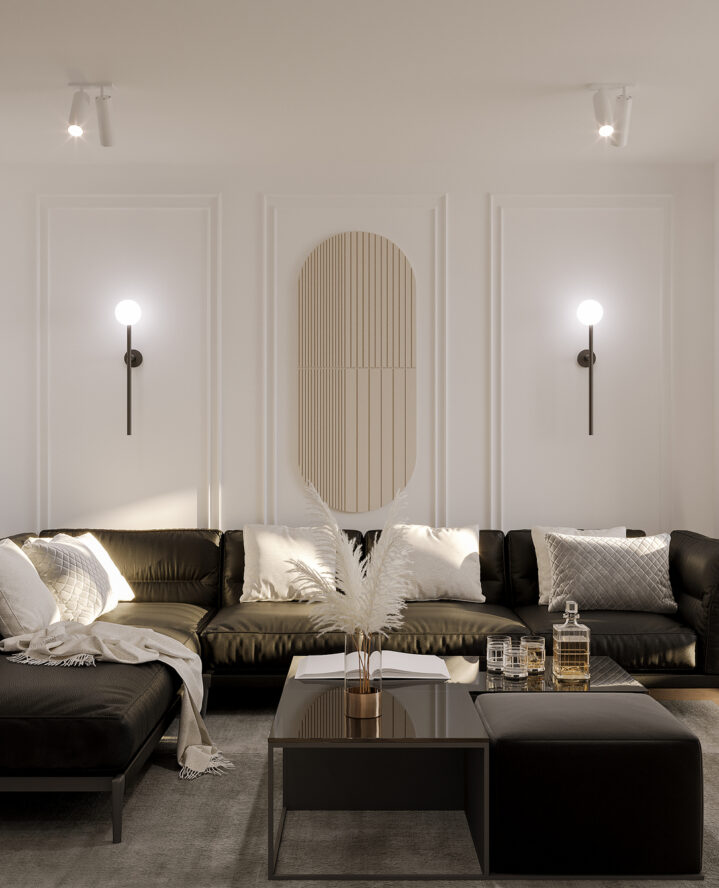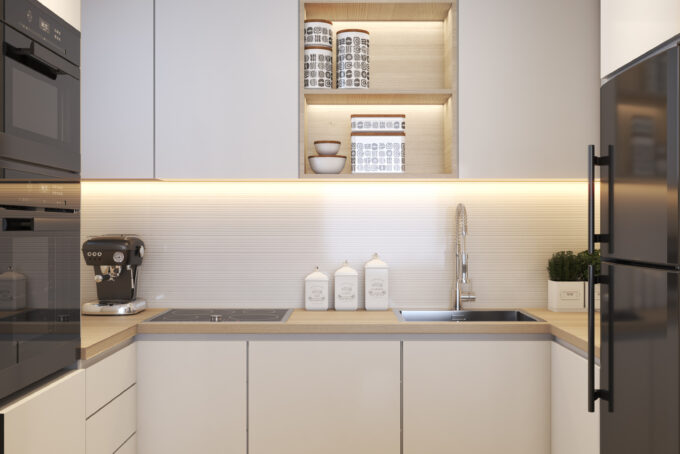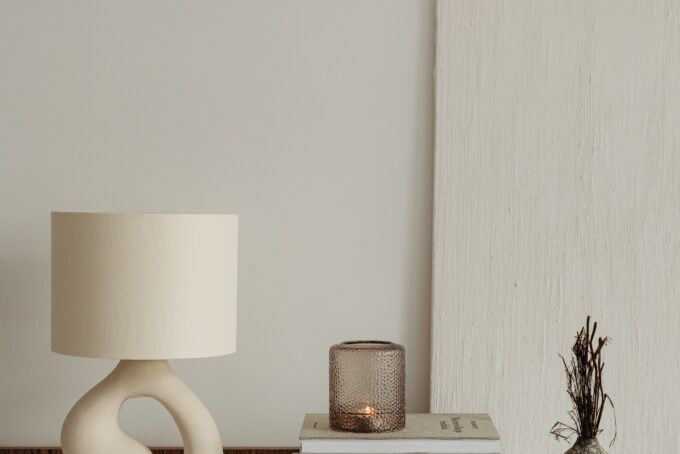Lighting isn’t just about illuminating a space; it combines ambiance with a function that sets the foundation for whatever activity you’re taking part in. It’s easy to add a few floor lamps or recessed lighting and call it a day, but when you incorporate layering, you’re taking lighting and elevating it into a whole new art form. It calls for a balance of hues and brightness, filling up a space without overwhelming it. If you’re intrigued by the complex concept, explore the depths of layered lighting to master it for your own home.
The Three Pillars of Layered Lighting
Start by looking at any given room as a blank canvas. Each “layer” of lighting is its own brush stroke, adding depth and dimension. At a high level, all layering lighting means is strategically combining different types of lighting fixtures to illuminate different parts within a room, creating a multi-dimensional look. It all boils down to three main pillars to keep in mind as you’re building your setup.
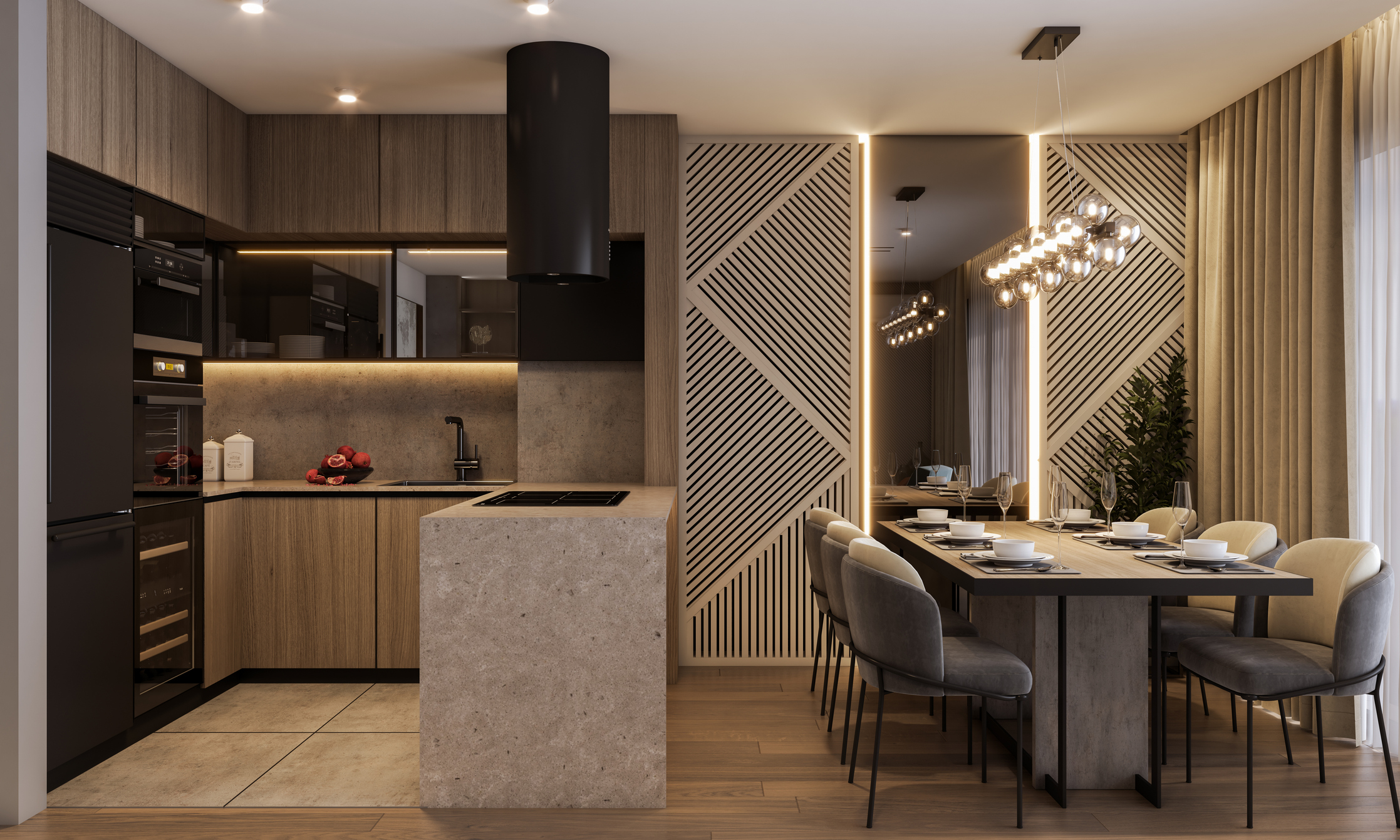
1. Ambient Lighting
Ambient lighting provides overall illumination to the room, serving as the base light. Typically, ambient lighting fixtures include ceiling-mounted fixtures, recessed lights, and wall sconces, which evenly distribute light throughout the space, creating a warm and inviting atmosphere.
2. Task Lighting
As its name suggests, task lighting is designed to support specific activities you do within a room. It could be reading a book, preparing a meal, or working on a project. Its job is to provide you with adequate illumination exactly where you need it most. Common examples of task lighting fixtures include desk lamps, under-cabinet lights, and pendant fixtures.
3. Accent Lighting
The pièce de résistance of layered lighting, accent lighting adds drama, flair, and personality to your space. By highlighting architectural features, artwork, or decorative elements, accent lighting creates visual interest and depth, transforming ordinary spaces into extraordinary showcases. Popular choices for accent lighting fixtures include picture lights, track lights, and adjustable spotlights.

Harmonizing Function and Style
Finding the perfect balance between doing what each light is intended to do and doing it with style is the tricky part. Here’s how you can seamlessly integrate these two essential elements.
Customize your layers.
Every room has its own unique personality and purpose, so it’s important to tailor your lighting scheme accordingly. Consider the specific activities that take place within each space and select lighting fixtures that complement the room’s function and aesthetic. For example, a cozy reading nook may benefit from a combination of soft ambient lighting and focused task lighting, while a formal dining area might truly shine with the addition of elegant accent lights.
Play with intensity.
Don’t be afraid to experiment with light intensity to create different moods and atmospheres. Dimmer switches are great tools for adjusting the brightness of your lights to fit the occasion. From hosting lively gatherings to enjoying a quiet evening at home, the ability to control the intensity of your lighting adds versatility to your space, so you can effortlessly transition between different activities and settings.
Layer with purpose.
Avoid overwhelming the space with too many competing light sources by focusing on creating a cohesive lighting design that guides your eye and enhances the purpose of the space.

Putting It All Together
With the fundamentals locked down, put them into practice in just a few steps.
Assess your space.
Chances are, you might already be starting with existing lighting such as ceiling fans or pre-installed fixtures. This is great! If you’ve figured out what kind of personality your room has, move on to identify areas that could benefit from additional lighting layers. Think intentionally about how each layer will interact with the others to create a cohesive ambiance.
Choose your fixtures wisely.
Choose lighting fixtures that not only complement your decor but also fulfill the specific lighting needs of each layer. Pay attention to factors such as size, style, and bulb type to seamlessly integrate into your design.
Experiment and adjust.
Adjust the positioning, intensity, and color temperature of your lights as needed to get the look you want. Remember, lighting is as much an art as it is a science, so trust your instincts and let your creativity guide you as you fine-tune your lighting scheme to perfection.
popular posts
Decorate
Access design inspiration that infuses personality and culture into your spaces.
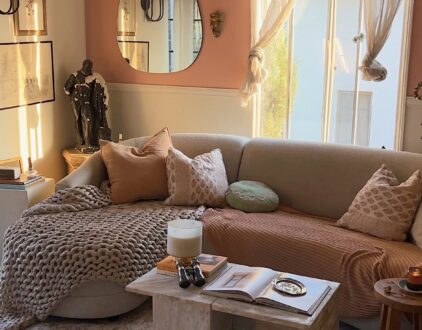
This LA Apartment Is a Masterclass in Cozy Maximalism
by Camryn Dilger | March 26, 2024

These Are the Holiday Trends You'll Want To Jump on ASAP
by Melody Beuzelin | November 14, 2023
Spaces
Whether it’s luxury or ease, every area of your home should be as fabulous and unique as you.

7 High-End Chandeliers To Brighten Your Space in Style
by Brittni Williams | August 8, 2023
11 Reasons Why You Need Recessed Lighting in Your Home
by Melody Beuzelin | November 2, 2023
These Are the Lighting Trends You Can Expect To See in 2024
by Melody Beuzelin | November 27, 2023
FOLLOW ALONG ON INSTAGRAM
#homeandtexture
Find us on social for more home inspiration where culture, personal style, and sophisticated shopping intersect to help you create a home where you love to live.
